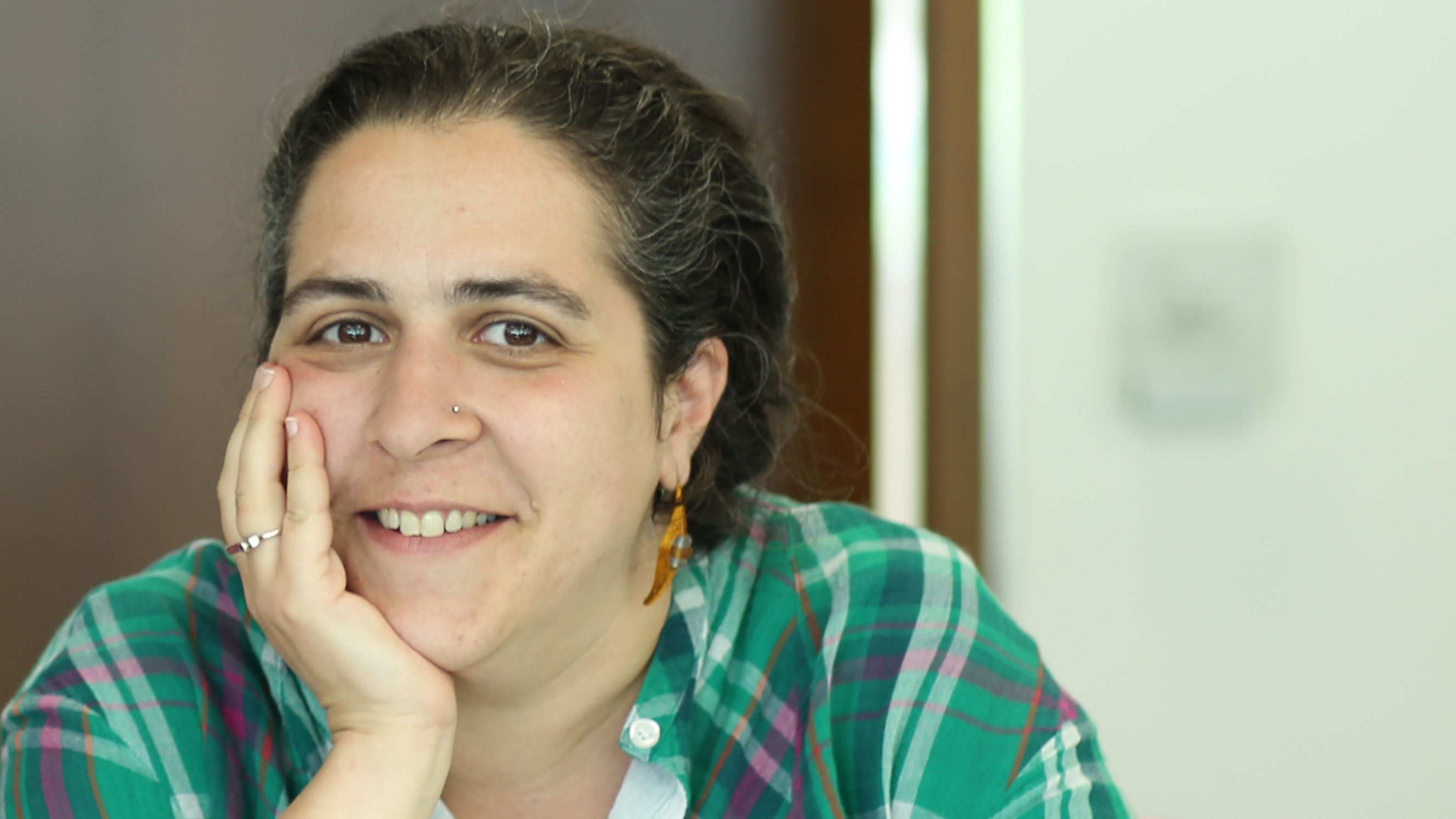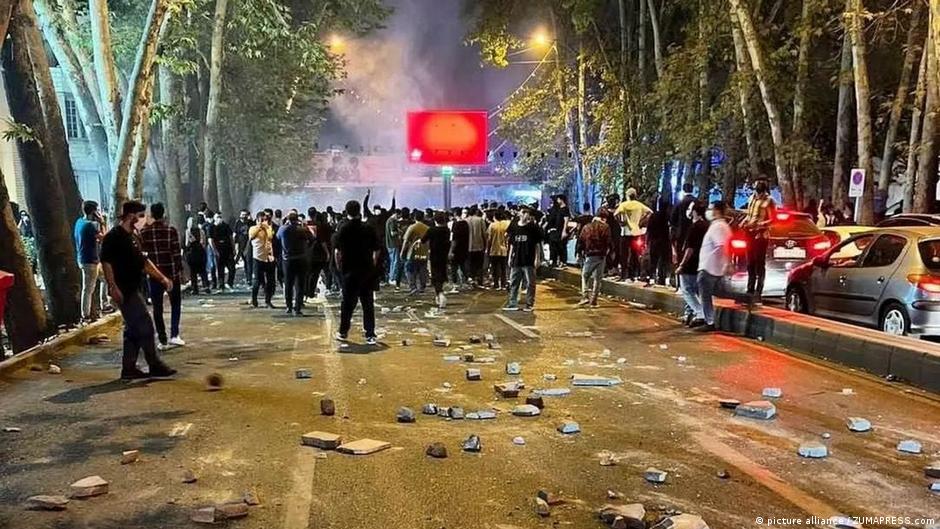"Change that goes beyond the moment"

You have reported on many public protests in Iran since 2008. Does anything strike you as being new or unique this time round?
Hannah Kaviani: It is hard to take an analytical approach towards something that is still unfolding. I do, however, see these protests as being both "expected" and "unexpected". I have covered Iran at Radio Farda/Radio Free Europe for the last 15 years, albeit from outside the country. As well as the big stories, I try to glean bits and pieces of information about what life is like, about cultural or everyday events in my home city of Tehran, particularly with reference to women. I should add that Iran is a highly diverse country: my observations about one place may be of limited value in another city or region. I do feel, however, that the city I left in 2007 no longer exists – so much has changed regarding the new generation and digital modes of communication.
So, what should we have been expecting? Public discontent has been piling up for a long time. This comes as no surprise following the massive protests in 2019 and Iran’s ongoing economic deterioration. On the other hand, in contrast to 2019, something new is taking place. We used to dismiss the younger generation as "apolitical" and a bit "superficial", concerned more about the virtual reality of chat platforms, Instagram, Tik Tok, or music on Spotify. We failed to realise that this generation, too, wants the chance to live a better life, hence the need for young people to make a move and assert themselves.
Public protest: a blend of social, economic and political factors
How can we make sense of the unrest beyond the very specific case of Mahsa Amini and her tragic death?
Kaviani: The discontent felt and the reasons people give for joining in the protest virtually or on the streets are truly diverse. This is aptly demonstrated by a fascinating trend surrounding the Mahsa Amini hashtag. There are already over 100 million posts in which people have expressed their very personal and unique views. On Twitter, you can read examples such as: "For my mother, who always had to hide her beautiful hair under a scarf", "For the imprisoned talents", or "For the environment". The reasons given for protesting are almost as numerous as the individuals themselves.
'Because of' became an instant mega hit once Shervin Hajipour composed the song from the tweets he had seen with a similar trending hashtag. Through it, Iranians r listing their yearnings & grievances against their country's regime following #MahsaAmini's death.
Translation by me pic.twitter.com/xim7Lj5aFw— Siavash Ardalan (@BBCArdalan) September 29, 2022
Clearly, this new generation of Iranians has no hope of securing a proper job, buying a home or getting married. Their socio-economic prospects are dire. The desperate state of the economy naturally plays a key role. Unlike the mass protests of 2019, however, the range of reasons being expressed this time round is far greater. The younger generation has zero economic or social stability. People are earning less and less in real terms (if they earn anything at all). And who knows? You could get caught on the streets by the morality police, be taken into custody and die.
Past experience suggests the Iranian government will suppress these protests at all costs. Dozens of casualties have already been reported. As hard as it to predict, what do you think will come next? What are the possible scenarios?
Kaviani: Unfortunately, it would be no surprise, if the crackdown, which is already underway, turns out to be the scenario for days, if not weeks, to come. It is hard to predict where this will lead, but one thing is clear: we cannot unsee what we have already seen. It is true that people were taking off their scarves before Mahsa Amini was murdered, but what the young girls and women are doing now – leaving home without a hijab, settling light to them and even dancing around heaps of burning scarves, sends a very different message.
Regardless of what happens next, the question is how will the system face this new reality? Even if the crackdown is successful, something fundamental has changed – society's willingness or otherwise to comply. It is change that goes beyond the moment and the current wave of street protests. That's why it is impossible to say exactly what will happen next.
The point of no return?
Officials in Iran have blamed the "enemies of Iran" for instigating the protests. Is there any differentiation in media or politics towards these protests, or is the condemnation unanimous and unwavering? How have the regime centrists or moderates associated with former president Rouhani reacted?
Kaviani: As you can imagine, Iran maintains tight control over the media. Journalists are even being detained for simply reporting Mahsa Amini’s death and funeral. The reality of these protests, their scale and popular scope is being totally downplayed. Government officials and hardliners have hurled insults at the protestors, saying the ongoing events have been instigated by outside forces. Iran’s Revolutionary Guards even bombarded targets in Iraqi Kurdistan, blaming a couple of parties in the region for being involved in the protests.

And then there are those from the so-called moderate or reformist camp who are trying to warn the system about this being "the point of no return". Surprisingly these voices have even been heard on state TV debates. Whether they are being heard within the system, and whether any compromise by the system would be effective, is another matter. That said, the Islamic Republic will soon be faced with the dilemma of appointing a new leader: any move by key political players in Iran now could affect the transition of power in the event of Ayatollah Khamenei’s death.
What kind of support do peaceful protesters and human rights activists expect or hope for from Europe and what might be counterproductive?
Kaviani: This is certainly an issue. Negotiations with the United States and Europe regarding the revival of the nuclear agreement are at a very critical juncture, as the U.S. State Department spokesman confirmed just a few days ago. This is undoubtedly a difficult situation for both the EU and the United States. How can you balance your own national security interests – the need to prevent Iran from going nuclear through diplomatic negotiations – while at the same time expressing understanding or even support for the demands of protesters?
The Iranian diaspora is coming out in solidarity with the protesters in Iran and demanding their governments do likewise. Politicians in Europe and the USA are currently walking a tightrope. What the demonstrators across Iran definitely want is for people to take notice, for their voices to be heard around the world. Other than that, I do not believe they harbour any specific expectations or hopes. Europe has enough major problems of its own at the moment, with the energy crisis, war in Ukraine and inflation.
Interview conducted by Erik Siegl
© Qantara.de 2022
Based in Prague, Hannah Kaviani is a senior journalist with Radio Farda, the Iranian branch of U.S-funded Radio Free Europe.